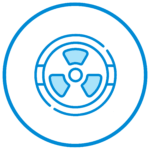EMPLOYEE HEARING TESTS AND HEARING CONSERVATION PROGRAMS
Our services simplify scheduling, streamline results, and make employee hearing exams and hearing conservation programs easier than ever before, smoothing your path to achieving and maintaining compliance.
For immediate assistance, please call 212-695-5122.

6,500 LOCATIONS NATIONWIDE
More locations means more convenience for your candidates and employees, making hiring and compliance easier.
FIND A CLINIC:
TYPES OF EMPLOYEE HEARING TESTS MOBILE HEALTH OFFERS
Whether you’re looking for pre-employment hearing testing or annual hearing testing for compliance, we can meet the needs of your industry.
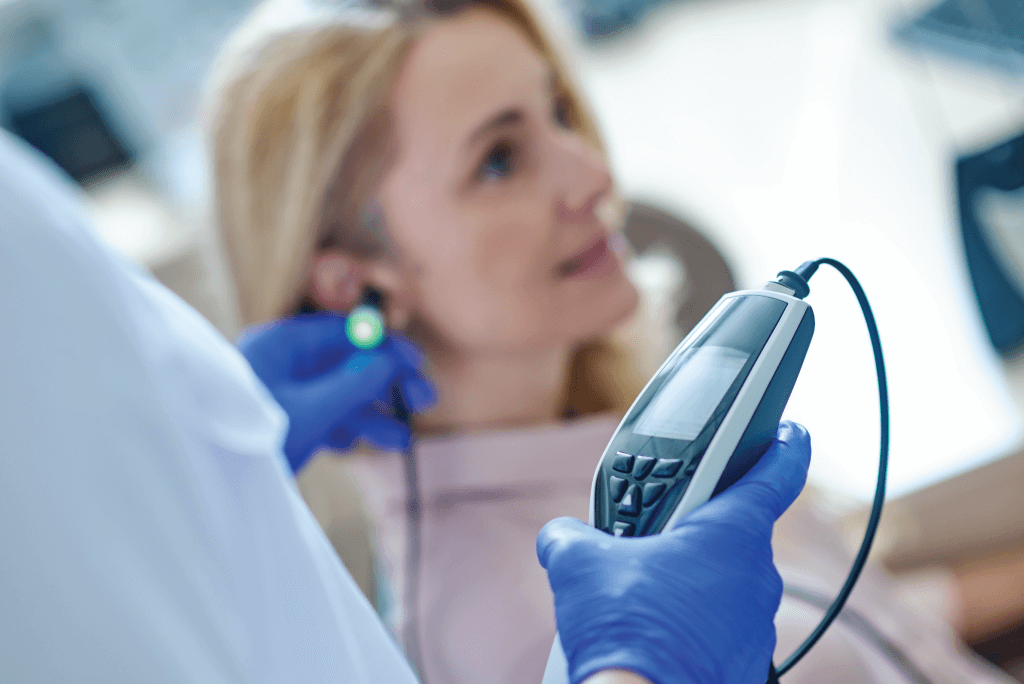
Auditory acuity screen
An auditory acuity screen determines how well someone can perceive speech by checking their hearing within the common speech frequencies. The testing is conducted by placing a sound probe in someone’s ear with the tester signaling when the sound is just audible.
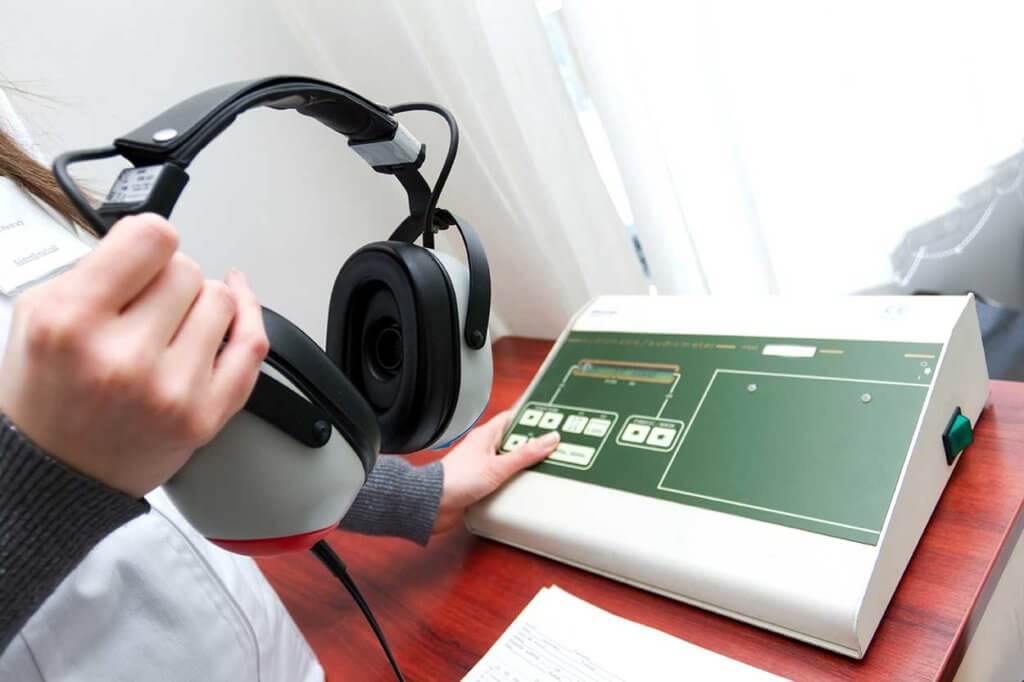
pure tone test and audiogram
A pure tone test determines the quietest volume someone can hear at different pitches (aka frequencies). An audiogram is the result of a hearing test, specifically a pure tone test, formatted as a graph. It maps if hearing loss has occurred and if it has, to what degree.
A NOTE ON HEARING SCREENINGS VS. HEARING TESTS
The technical term for a hearing screening is audiometric screening. An audiometric screening, also known as audiometer hearing screening, tests someone’s basic ability to hear. It is commonly measured as a pass/fail, meaning someone can hear just fine or they can’t, and determines whether someone should go on to further testing.
Audiologic testing determines baseline hearing, as well as if and how much hearing loss has occurred. It offers more detail than audiometric screening, which is an important aspect of OSHA compliance.
OSHA HEARING CONSERVATION PROGRAM
The OSHA hearing conservation program requires employers to prevent hearing loss and protect existing hearing for employees exposed to a certain noise level. That noise level, often referred to as the OSHA noise level standard, is 85 decibels or higher experienced over a time-weighted average of 8 hours.
More importantly, hearing loss can lead to communication difficulties, tinnitus, poor mental health, heart problems, or cognitive decline. It can also be a safety hazard for anyone affected and those around them. So it’s in the best interest of you as an employer and your employees to be compliant with the OSHA hearing conservation program.
KEY COMPONENTS OF AN OSHA HEARING CONSERVATION PROGRAM
The basic tenets of a compliant hearing conservation program include assessing, monitoring, and mitigating the risks associated with noise exposure in the workplace.
- Noise Level Monitoring: Employers are required to regularly measure noise levels in the workplace to identify areas where exposure exceeds permissible limits.
- Audiologic Testing: Baseline and regular hearing tests are conducted to monitor employees’ hearing health and detect any changes over time.
- Hearing Protection: OSHA mandates that employers provide appropriate hearing protection devices to employees exposed to hazardous noise levels.
- Training and Education: Employers must ensure that employees receive training on the effects of noise on hearing, the proper use of hearing protection, and other relevant topics.
- Recordkeeping: Comprehensive recordkeeping of noise exposure measurements and audiometric test results is essential to track employee exposures and monitor program effectiveness.
HEARING CONSERVATION PROGRAM SERVICES WE OFFER
We offer a range of services to assist employers like you in effectively implementing and managing an OSHA hearing conservation program, including:
- Audiologic Testing: Conducting baseline and annual hearing tests for employees in compliance with OSHA requirements. Includes capabilities for identifying work-related versus personal hearing loss.
- Hearing Protection Solutions: Assisting employers in selecting and providing appropriate hearing protection devices tailored to their employees’ needs.
- Hearing Protection Fit Testing: Recommended by OSHA as part of an employee’s first baseline exam, hearing protection fit testing measures how much noise is reduced by the hearing protection based on how well it fits.
- Training and Education: Delivering comprehensive training programs to educate employees on the importance of hearing conservation and proper use of hearing protection.
- Recordkeeping Services: Our Client Portal makes maintaining detailed records of audiometric test results easy and OSHA-compliant.
THE MOBILE HEALTH ADVANTAGE
We offer expertise, fast results, and service flexibility to make hearing exams and hearing conservation the easiest part of your job.
EXPERTISE OF A CERTIFIED OCCUPATIONAL HEARING CONSERVATIONIST (COHC)
Focused on hearing tests, equipment maintenance and management, and hearing loss education for employees and employers, our COHC is your key to an expertly crafted and executed hearing testing and conservation program.
REAL-TIME RESULTS
All results for employee hearing tests and hearing shift analysis are delivered directly to your Client Portal in real-time. Results can also be integrated with your HRIS or ATS.
FLEXIBILITY AND ACCESSIBILITY
Whether you prefer we come on-site, or to send your employees to any of our , we can meet your hearing exam and conservation needs in a way that’s convenient to you and your team.
Our Services
Drug & Alcohol Testing
Customized drug panels and testing programs with on-demand results.
Learn MoreDrug & Alcohol Testing

Physical Exams
OSHA-compliant and industry-specific physical exams for a healthy workforce.
Learn MorePhysical Exams
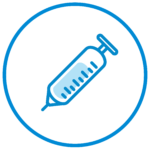
Vaccines & Titers
From annual flu shots to titer blood tests, we ensure employee immunity.
Learn MoreVaccines & Titers

Respirator Fit Testing
On-site, in-clinic, or self-administered fit testing for N95 respirators.
Learn MoreRespirator Fit Testing
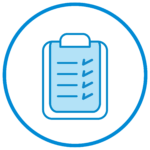
Physical Abilities Test
Ensure your workers can perform their duties while reducing workplace injury.
Learn MorePhysical Abilities Test
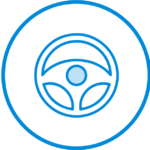
DOT physicals + drug testing
Next-day DOT physical + DOT drug test with driver self-scheduling.
Learn MoreDOT physicals + drug testing
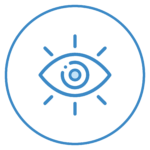
VISION SCREENING
Comprehensive vision exams performed on-site or through our 6,500 clinics.
Learn MoreVISION SCREENING
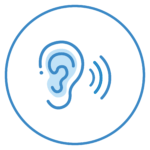
HEARING SCREENING
Audiometric testing and acuity screening for pre-employment & OSHA hearing conservation programs.
Learn MoreHEARING SCREENING

Online Medical Evaluations
OSHA-compliant evaluations to clear your workers for respirator fit testing.
Learn More
